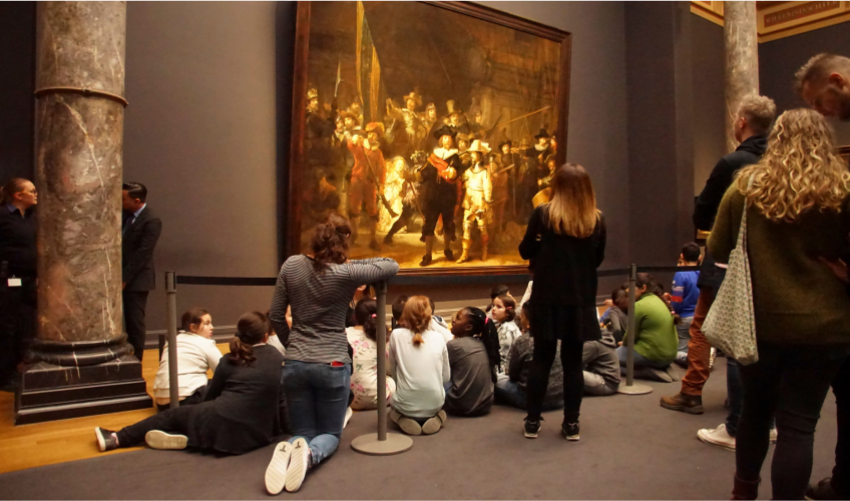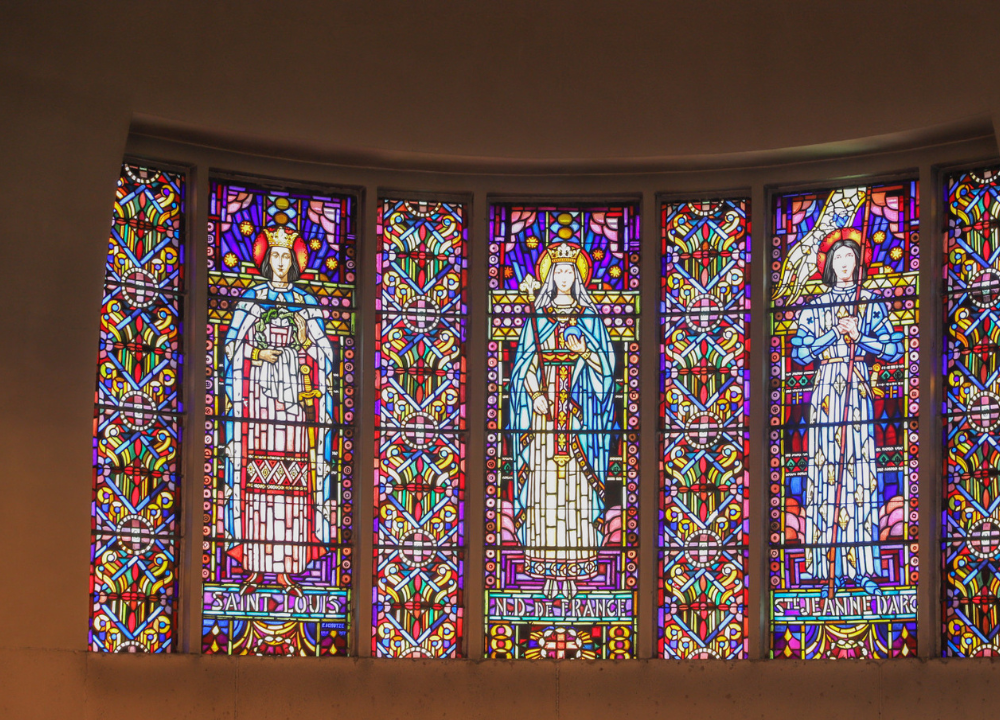Michelangelo’s “David and Goliath” captures a timeless story of bravery and skill. This famous artwork showcases the battle between the young David and the giant Goliath.
In the heart of Renaissance art, Michelangelo’s depiction of this biblical tale stands out. Completed in the early 16th century, it illustrates not just a physical battle, but also a struggle of faith and courage. David, a young shepherd, faces Goliath, a formidable giant, with nothing but a sling and a stone.
This iconic statue embodies the themes of strength against odds and the triumph of the underdog. Discover how Michelangelo brought this powerful narrative to life and the significance it holds in art history.
The Masterpiece
The “David and Goliath” sculpture by Michelangelo is a stunning work of art. It captures a famous biblical story. The masterpiece represents the moment when David defeats the giant Goliath. This piece showcases Michelangelo’s incredible talent and skill. Many admire its beauty and detail. It remains a symbol of courage and strength.
Creation Process
The creation of “David and Goliath” began in 1501. Michelangelo was commissioned to carve this statue from a single block of marble. The block was large and had been rejected by other artists. Michelangelo saw potential in it. He began working on it with great passion and focus.
The process involved several steps:
- Studying the biblical story for inspiration.
- Sketching initial designs.
- Carving the rough shape of David.
- Adding details to create a lifelike figure.
- Polishing the marble to enhance its shine.
Michelangelo worked tirelessly for over two years. He often worked late into the night. His determination was evident in every stroke of his chisel. The result was a statue that stood over 14 feet tall. It was unveiled in 1504 to great acclaim.
Artistic Techniques
Michelangelo used several artistic techniques in “David and Goliath.” His mastery of anatomy is clear. David’s muscles are well-defined, showing strength and grace. Michelangelo studied human bodies to achieve realism.
Key techniques include:
- Contrapposto: David stands in a relaxed pose, shifting weight onto one leg.
- Chiaroscuro: The use of light and shadow adds depth.
- Detailing: Facial expressions convey emotion and determination.
Michelangelo’s skill in marble carving is remarkable. He used a technique called subtractive sculpture, removing material to create the figure. This method requires precision and patience. The final piece is not just a statue; it is a story in stone. It captures the moment before battle, filled with tension and anticipation.
Historical Context
Michelangelo’s “David and Goliath” stands as a remarkable piece of art. This sculpture reflects the spirit of its time. Understanding its historical context helps us appreciate its significance. The Renaissance was a time of great change. People valued art, science, and human potential. This period set the stage for Michelangelo’s masterpiece. His work embodies the ideals of strength, courage, and faith.
Renaissance Influence
The Renaissance influenced many artists, including Michelangelo. This period celebrated humanism. Artists focused on human experience and emotion. Michelangelo was inspired by classical art and philosophy. He studied ancient sculptures and texts. This helped him create works that showed deep understanding of the human form.
Key aspects of Renaissance influence include:
- Humanism: Focus on human values and experiences.
- Naturalism: Realistic representation of subjects.
- Perspective: Techniques to create depth in art.
Michelangelo’s “David” embodies these ideals. The sculpture captures the moment before David fights Goliath. It shows tension and emotion. The detailed anatomy reflects Michelangelo’s skill. He aimed to inspire viewers with David’s bravery.
The Renaissance also encouraged competition among artists. Patrons commissioned grand works. This pushed artists to excel. Michelangelo’s success in this environment led to his iconic status.
Political Climate
The political climate during Michelangelo’s time shaped his work. Italy was divided into city-states. Each had its own rulers and ambitions. Florence, where Michelangelo lived, was a center of power and art. The Medici family supported artists and influenced politics.
Key factors in the political climate include:
- Medici Family: Major patrons of the arts in Florence.
- Conflict: Rivalries between city-states led to instability.
- Church Influence: The Catholic Church played a significant role in art patronage.
This environment pushed Michelangelo to express themes of power and faith. “David” symbolizes the fight against tyranny. The story of David and Goliath speaks to overcoming great odds. Michelangelo’s work resonated with the public and political leaders. It represented hope and strength during turbulent times.
Art became a tool for political expression. Michelangelo’s sculptures and paintings reflected the struggles of his society. His works inspired people to stand against oppression and fight for justice.
Symbolism In Art
The sculpture of David by Michelangelo is more than just a beautiful piece of art. It holds deep symbolism. The story of David and Goliath is known for its themes of courage and triumph. Michelangelo’s work captures these ideas in a powerful way. Through the figures of David and Goliath, Michelangelo explores heroism, strength, and the battle between good and evil. Each character embodies different traits that resonate with viewers across time.
David As A Hero
David stands as a symbol of courage and determination. He is a young shepherd who faces a giant with only a sling and a stone. His bravery inspires many. Michelangelo’s representation of David highlights several key aspects:
- Courage: David shows fearlessness in the face of danger.
- Faith: He trusts in his abilities and in a higher power.
- Humanity: David is depicted as a relatable figure, not a superhuman.
Michelangelo’s David is not just a warrior. He is an everyman. This connection makes him a hero for all. The details in his face and body show tension and focus. These features convey his readiness for battle.
The sculpture also reflects the Renaissance ideals of humanism. Artists during this time celebrated human potential. David embodies these ideals through his physical form and spirit. His posture is confident, showing he is prepared to confront Goliath. Here is a quick table highlighting his heroic traits:
| Trait | Description |
|---|---|
| Courage | Facing Goliath despite being outmatched. |
| Skill | Expert use of a sling, showcasing his talent. |
| Leadership | Inspires others to believe in themselves. |
Goliath’s Representation
Goliath is more than just a giant. He represents fear, oppression, and the challenges we face. Michelangelo’s portrayal emphasizes his size and menace. Yet, Goliath is not just a brute. He symbolizes the struggles against overwhelming odds.
Goliath’s features reflect arrogance and confidence. This makes David’s victory even more significant. Goliath stands for obstacles that seem impossible. Here are some key points about Goliath:
- Intimidation: His size is meant to intimidate.
- Hubris: He believes no one can defeat him.
- Isolation: Goliath stands alone, representing the isolation of tyranny.
The juxtaposition of David and Goliath highlights a powerful message. Strength does not always come from size. Skill, faith, and determination can lead to victory. Michelangelo’s Goliath serves as a reminder that great challenges can be overcome. The struggle against giants is universal, making this story timeless.
Michelangelo’s Style
Michelangelo’s style in the statue of David captures the essence of human strength and beauty. His work reflects a deep understanding of anatomy and movement. Michelangelo’s David stands as a symbol of defiance and courage. The detailed craftsmanship showcases his unique approach to sculpture. This section explores Michelangelo’s sculptural techniques and his masterful use of proportions.
Sculptural Techniques
Michelangelo used various sculptural techniques to create David. His approach was innovative and precise, setting a standard for future artists. The following points highlight his techniques:
- Subtractive Method: Michelangelo carved David from a single block of marble. He removed material to reveal the figure.
- Detailing: Fine details, such as veins and muscles, show his understanding of human anatomy.
- Contrapposto Stance: David’s pose has weight shifted onto one leg, creating a sense of movement.
These techniques contributed to the lifelike appearance of David. Each feature, from the hands to the facial expression, tells a story of strength and determination. The table below summarizes key techniques used by Michelangelo:
| Technique | Description |
|---|---|
| Subtractive Method | Carving from a solid block of marble. |
| Detailing | Creating intricate features to enhance realism. |
| Contrapposto | Positioning the body to suggest movement. |
These elements combined to create a powerful representation of David. Michelangelo’s techniques showcase his genius and artistry.
Use Of Proportions
Proportions play a crucial role in Michelangelo’s David. He used specific ratios to create balance and harmony. Michelangelo’s understanding of proportions enhances the statue’s visual impact. Here are the key aspects:
- Height to Width Ratio: David’s height is about 17 feet, emphasizing his grandeur.
- Head Size: The head is larger than normal to draw attention to his expression.
- Muscle Proportions: Muscles are exaggerated, highlighting strength and power.
These proportions create an illusion of ideal beauty. They also convey emotion and character. The table below illustrates how Michelangelo manipulated proportions:
| Aspect | Details |
|---|---|
| Height | 17 feet tall, symbolizing greatness. |
| Head Size | Larger to emphasize facial features. |
| Muscle Size | Exaggerated for dramatic effect. |
Michelangelo’s use of proportions in David is remarkable. His attention to detail helps the statue express strength and confidence.
Cultural Impact
David and Goliath by Michelangelo is more than just a masterpiece. It symbolizes the struggle between good and evil. This iconic sculpture has left a lasting impact on culture and society. Its themes resonate deeply, inspiring countless artists and writers. The story of David’s triumph over Goliath encourages people to believe in their potential. This cultural significance continues to influence art and literature today.
Inspiration For Artists
Michelangelo’s David is a beacon of inspiration for many artists. Its detailed representation of the human form showcases artistic skill. Artists study this work to learn about anatomy, proportion, and expression. The following points highlight its influence:
- Realism: The sculpture exemplifies realistic human features.
- Emotion: David’s expression captures determination and courage.
- Symbolism: Represents the fight against overwhelming odds.
Many artists have created works inspired by David and Goliath. They explore similar themes of struggle and victory. A few notable examples include:
| Artist | Work | Theme |
|---|---|---|
| Donatello | David | Overcoming adversity |
| Bernini | David | Dynamic motion |
| Rodin | The Thinker | Inner conflict |
These artists show how Michelangelo’s work continues to inspire. Each piece reflects the spirit of David’s story.
Influence On Literature
The story of David and Goliath has impacted literature significantly. Writers use this tale to convey messages of hope and resilience. It appears in various forms, from poetry to novels. The themes of courage and faith resonate with readers. Here are key aspects of its influence:
- Metaphors: David represents the underdog.
- Character Development: Characters often face overwhelming challenges.
- Themes of Triumph: Stories often highlight victory against the odds.
Numerous works reference David and Goliath. Here are a few notable examples:
- “David Copperfield” by Charles Dickens: The protagonist faces life’s challenges.
- “Goliath” by Tope Folarin: A modern retelling of the classic tale.
- “The Underdog” by Various Authors: Short stories focusing on overcoming struggles.
This literary influence shows the timeless nature of the story. It encourages readers to find strength in their own battles.
Conclusion
Michelangelo’s “David” captures a powerful moment in history. This sculpture shows bravery and skill. It reminds us that strength comes in many forms. The details highlight David’s youth and determination. Art can inspire and provoke thought. Michelangelo’s work continues to resonate today.
It invites viewers to reflect on their own challenges. Understanding this masterpiece deepens our appreciation for art. “David” stands as a symbol of hope and courage. Visiting this statue offers a chance to connect with the past. Embrace the lessons it teaches about overcoming obstacles.




